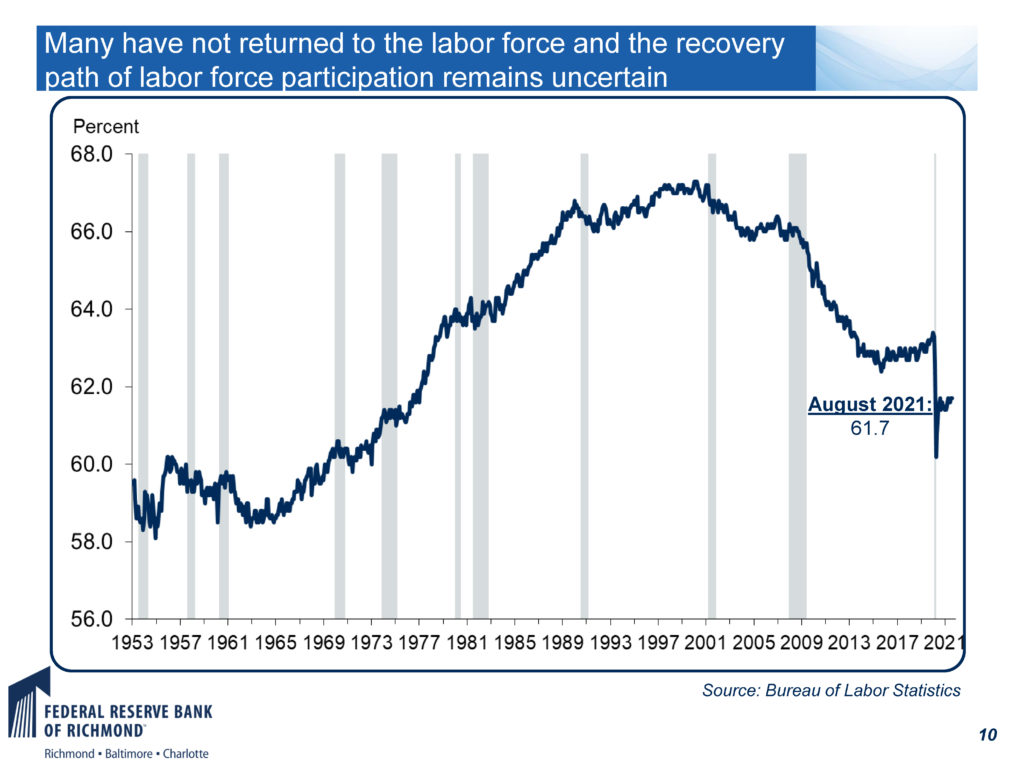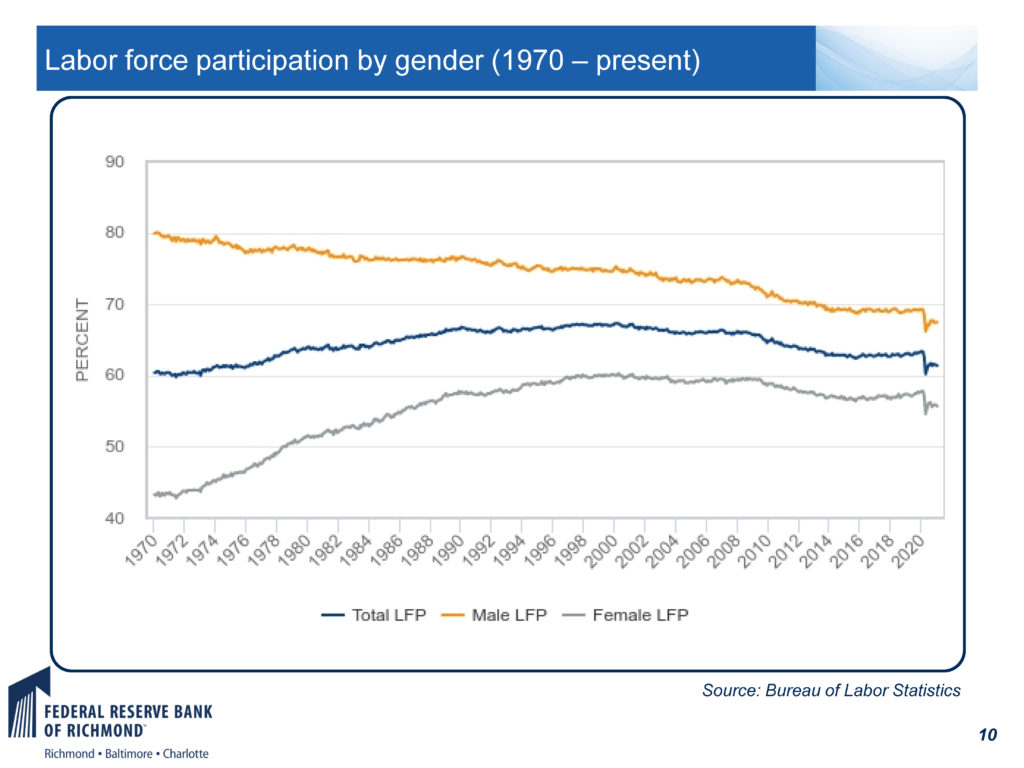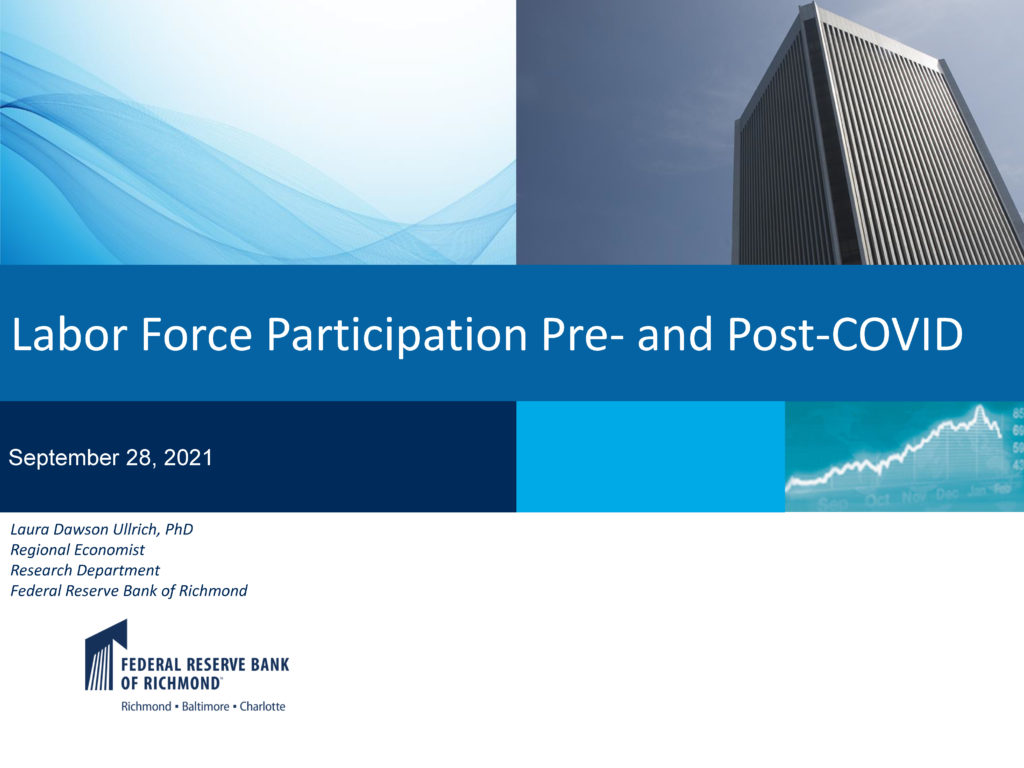There is no topic more discussed these days than the current difficulties companies have filling jobs. This labor shortage is usually associated with the pandemic and is being analyzed in small businesses and corporate boardrooms, and especially at economic development organizations!
We wanted to dig deeper into this topic, so we invited Dr. Laura Ullrich, a labor economist at the Federal Reserve Bank of Richmond to join us and about 80 of our friends for a virtual presentation. Dr Ullrich shared her research and analysis on the declines in labor force participation and offered some observations about the future. You can read her recent article Male Labor Force Participation: Patterns and Trends in the Fed’s EconFocus Magazine.
Current Situation
While GDP has returned to ‘pre-pandemic’ levels, and the unemployment rate has fallen (to 4.3% in NC) employment has been slower to recover, with more than 5 million fewer jobs in August 2021 than in February 2020. While fiscal stimulus has led to strong gains in consumer spending and saving, labor force participation (LFP) rates remain below pre-Covid levels and recovery is uncertain.

Labor Force Participation Overview
From 1970 to 2000 there was significant gains in overall LFP, led by women entering the labor force at higher rates, the baby boomer generation moving into prime working age and extended life expectancy. From 2000 through 2019, there was a decline in LFP as baby boomers began to retire and we saw an increase in disability rates. This time also saw male LFP drop by nearly double the rate of the decline for females.
Gender Differences in LFP
Beginning with the declines from 2000-2019, male LFP dropped more quickly (by 5.8 percentage points) than female LFP (only by 2.3 percentage points) and has been recovering more slowly since the pandemic.

What’s Next for LFP?
Since 2020, all demographic groups saw declines in LFP and some have recovered more than others. When asked about their lack of urgency in seeking employment, Covid is the biggest factor for the non-college unemployed. In July 2020, the share of young adults living with their parents rose to levels that had not been seen since the Great Depression. (52% of 18-29-year-olds in July 2020). These factors may be slowing down the recovery in LFP. Surveys indicate that millions may have left the labor force permanently, so we may not recover to pre-Covid levels. Research suggests the following can improve LFP: a decrease in Covid rates, dependable school and childcare, comfort with long term care options for elderly, and reductions in government support. Recent wage increases may also induce more people into the labor force. While Ullrich is ultimately optimistic about the overall Labor Force Participation Rate, she will continue to monitor and write about the declines in the male LFP and its impacts on the economy. You can view a recording of her September 28, 2021 presentation, or see her slide deck here.
To learn more about LFP, read these articles.
The Number of People Quitting their Jobs is at Near-Record Levels– Chmura
During the ‘Great Resignation,’ workers refuse to accept the unacceptable.
People who are used to tolerating bad work situations are increasingly leaving their jobs and demanding better working conditions.-Washington Post
7 ways men live without working in America-Yahoo Finance
More women left the work force in September than the US economy added jobs-Business Insider
A Generation of American Men Give Up on College: ‘I Just Feel Lost’– Washington Post

